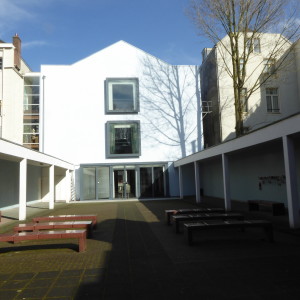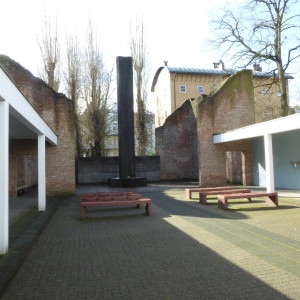RELIEF (Revue électronique de littérature française)
Éditions Verdier : un lieu, un projet, un trajet collectif
Manet van Montfrans s’entretient avec Colette Olive
Mots-clés: French literature, Editions Verdier, édition, traduction
Résumé
Verdier est une maison d’édition indépendante avec un siège social à Lagrasse, dans l’Aude, et une permanence à Paris. La maison est aujourd’hui co-gérée par Colette Olive et Michèle Planel. Ensemble avec Gerard Bobillier et Benoît Rivéro (qui quittera le groupe assez vite), elles ont été à l’origine d’une aventure éditoriale extraordinaire. Les titres (environ 700) du catalogue édité en 2019 à l’occasion des quarante années d’existence se regroupent en cinq grandes rubriques : littérature, sciences humaines, philosophie, art, architecture et cinéma, spiritualités.
À la fondation de la maison en 1979, les éditeurs ont laissé derrière eux leur militantisme politique, sans pour autant renier leur volonté de contribuer à transformer sinon le monde, du moins les consciences. Le catalogue témoigne d’une exigence sans faille ainsi que d’une extraordinaire ouverture au monde. Né en plein cœur des Corbières, Verdier a voulu se situer au croisement de différentes cultures. En font preuve les collections de traductions de plusieurs langues étrangères, dont l’arabe et l’hébreu. Le fonds comporte des textes fondateurs tels le Guide des égarés de Moïse Maïmonide, Les Batailles nocturnes de Carlo Ginzburg, Les récits de la Kolyma (2003) de Varlam Chalamov, mais il montre aussi l’émergence d’auteurs français importants, tels Pierre Michon et Pierre Bergounioux.
Comment une maison d’édition qui se caractérise par un fonds exigeant a-t-elle réussi à garder son indépendance sans faire de concessions ? Comment a-t-elle su survivre aux naufrages économiques, éviter d’être écrasée dans des reprises commerciales incertaines ? Comment a-t-elle fait face à la transformation radicale de l’industrie du livre, c’est-à-dire sa fabrication, sa diffusion et sa médiatisation ? Ce sont les questions que nous avons posées à Colette Olive, dans le cadre d’un entretien visant à mettre en lumière le travail accompli durant une quarantaine d’années par cette maison d’édition singulière.
https://revue-relief.org/issue/view/466.


